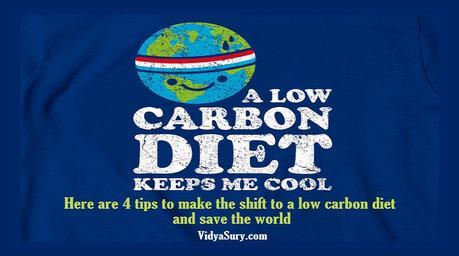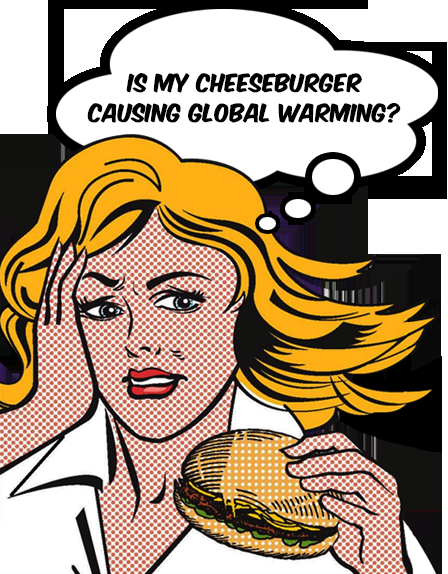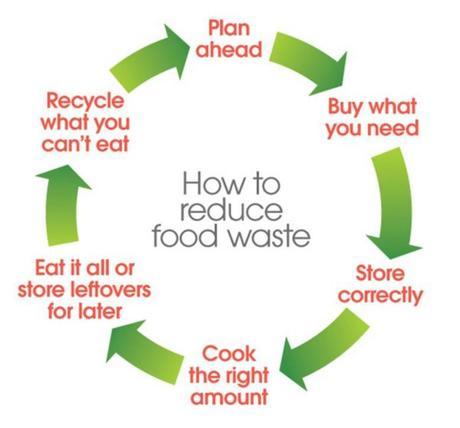
Two days ago, while chatting with my neighbor, I was shocked to learn how some of the big business names were disposing off surplus food. Apparently they have a system where they have to dump it. Dump it! While millions go hungry around us. As he explained the process, I felt deeply disturbed.
Even as I fretted over it, I got busy doing the research for a client about making sustainable choices. The info I found was staggering.
Maybe I can't wave a wand and change the world, but I can certainly do my bit for the planet and her people. I make it a practice to go out and give away any food we don't consume so that someone else can enjoy it when it is fresh. I also try and make healthy choices that reduce my carbon footprint. This includes a low carbon diet.
What is a low carbon diet?
A low carbon diet focuses on making lifestyle choices that support the reduction of greenhouse gas emissions relating to nourishment decisions. You see, there are many factors that go into making a diet low carbon. In fact, production, transport, packaging and waste of food are involved in the production of greenhouse gasses.
By giving a thought to what we eat, we can positively impact the environment and our health.
The thing is, being mindful of what we put into our body is an ongoing practice of intention and habit. Even though our intentions may be good and we do want to eat healthier for ourselves and the planet, some habits are hard to break.
Let us not forget that to be gentle to our planet, we have to be gentle on ourselves as well. By incorporating gradual changes to the way we live and eat, it is possible to cultivate new, healthier habits.
Some quick research shows four ways we can immediately make a difference. Here are the four ways to make a shift to healthier alternatives for you and the Earth.

Less Red Meat
We've learned in school that the production of food involves a huge amount of energy. Why, just raising a large animal for food means a tremendous amount of energy.
One of the main tenets of the low carbon diet is substituting other sources of protein for beef as much as possible.
The low carbon diet option
The switch to eating less red meat can be done gradually. Start by reducing the size of the beef portion. Then, minimize the number of meals with beef, substituting with foods like chicken and fish. Finally, you can even decide to make beef an occasional choice.
As an added benefit, the reduction in beef consumption will help you cut down on saturated fat intake and prevent heart disease. It will also cut down on the carbon-intensive process of feeding and maintaining cattle to maturity, reducing the carbon impact of transport.

Buy Local and Seasonal
Thanks to worldwide food transport, we can now enjoy strawberries in supermarket the year around. This is mainly because the produce industry is taking advantage of the alternating seasons of the northern and southern hemispheres. The result? Transporting these out of season produce is a high carbon practice, making these items themselves high carbon.That's not all. Yet another high carbon practice is growing of out of season fruits and vegetables in greenhouses, powered by non-renewable energy.
The low carbon diet option:
Try to buy local and seasonal. This means fresh food choices when shopping at the store.
If you have a farmers' market nearby, try out the seasonal fruit and vegetable offerings grown in your area. Better yet, if you have the space, try growing some herbs and vegetables. You will save the carbon in transport and carbon intensive production.

Reduce Food Waste
The energy contained in the food we eat includes the energy used to grow as well as prepare it. When food is wasted, that energy is lost. In addition, food waste that makes its way to the landfill breaks down becoming a huge source of methane gas.
The low carbon diet option
Think about this: What will you reasonably consume when you go to the supermarket? Less food left to linger in the refrigerator leads to less food waste. Another wallet-friendly strategy to lower food waste is to have at least one meal a week that takes care of those still useful leftovers.
While it may look like using up all the food in the refrigerator is a great way to lower food waste, there is something even more to consider here. The containers and packaging used in wrapping and protecting the food and bringing it home is another carbon cost of food.
So next time you buy packaged food at the store, ask yourself this: can you recycle the container?
When you visit your favorite takeout place, talk to them about switching to environmentally friendly packaging as well.
Just recently I enjoyed seeing a video on edible forks and spoons. How delicious is that?

Focus on Plants
Today, there are more plant based food choices available in place of the traditional animal products. For example, the condiment Just Mayo by Hampton Creek uses plant-based instead of animal-based ingredients. This company keeps the health of their customers and the planet as its focus. They identify plants with properties that will work in their foods exactly as the traditional animal products would, and swap the traditional ingredient for the healthier alternative.
The low carbon diet option
Look for plant-based options in foods that traditionally use animal products in their preparation.
It is true that making the shift to a low carbon diet will mean some conscious effort, but that is the case with all change. And you know what they say: no pain, no gain. Considering all the environmental change thanks to man's creativity, every little counts.
Why not see it as an adventure, as you seek out new ways to eat healthier and try some new things? You will also have the distinction of saving the planet in the process. For some educational fun, check out this low carbon food quiz.
What do you think about making the change to a low carbon diet?
Would you do it?I'm asking because our food choices affect the future of our planet.

Writer, editor, blogger, social media enthusiast. Love DIY, Coffee, Music, Reading, Photography, Family, Friends and Life. Mantra: Happiness is a DIY Project. In my free time I play with my dust bunnies and show my diabetes who's boss. Tweet as @vidyasury

